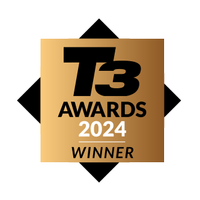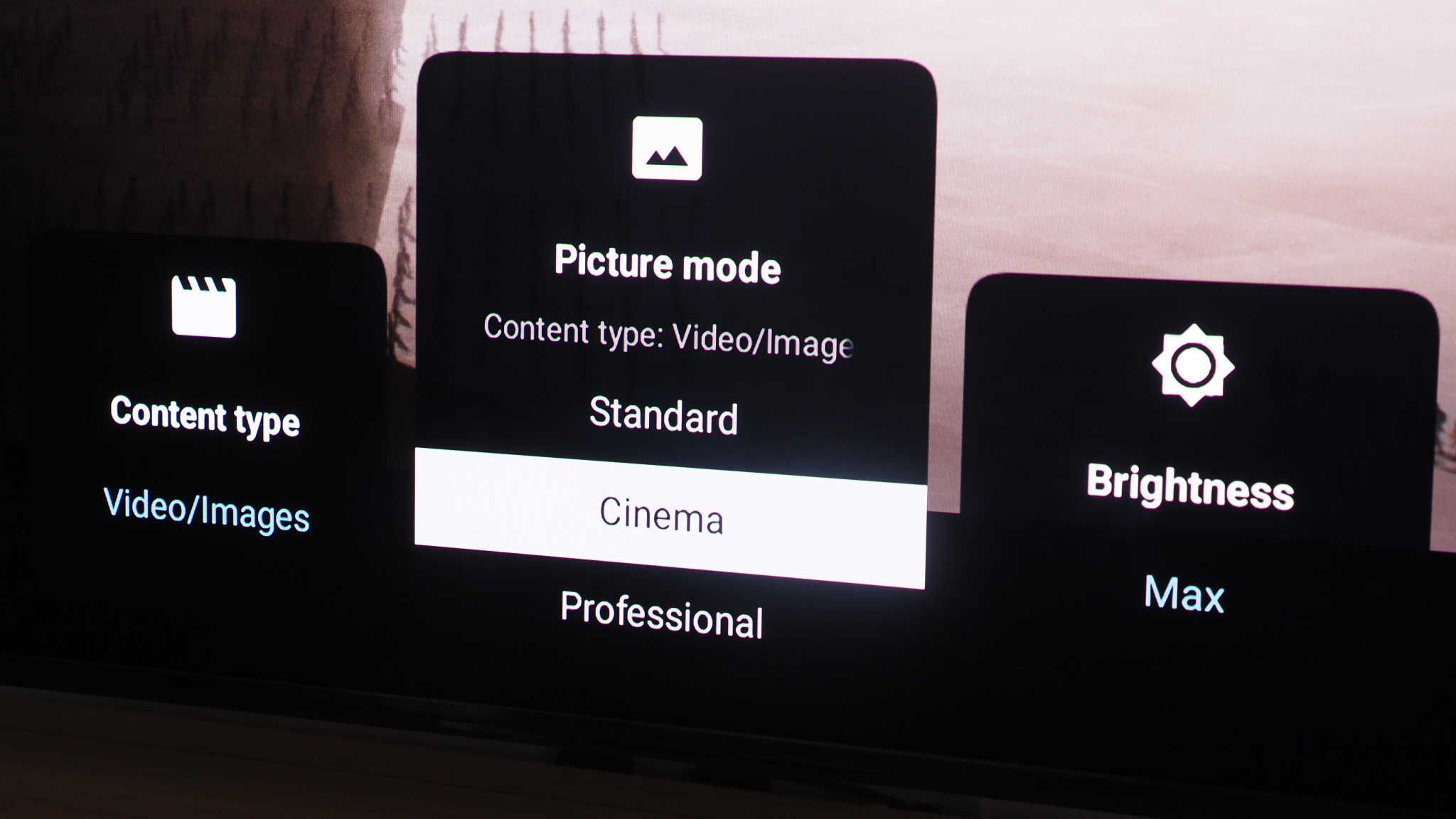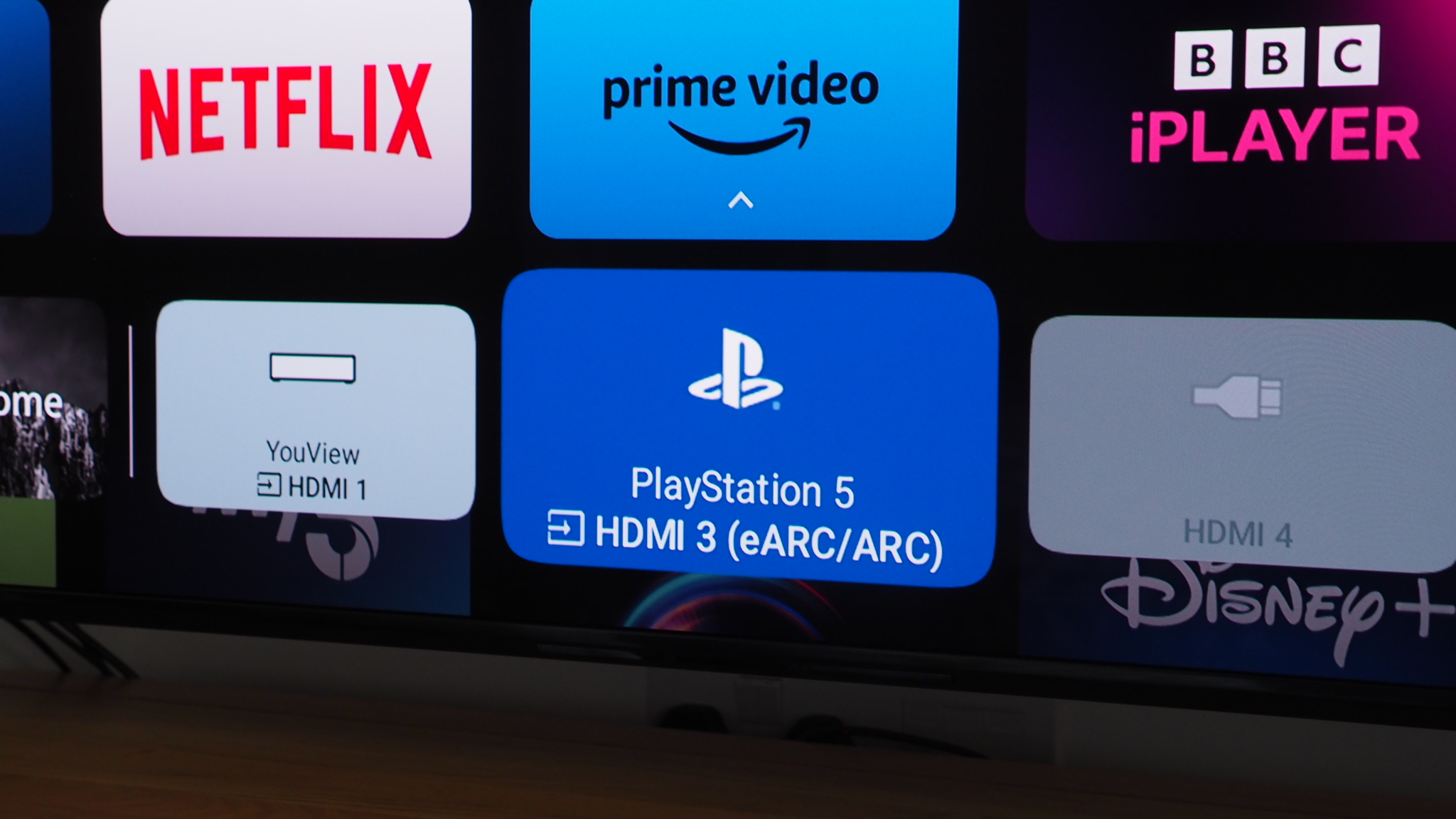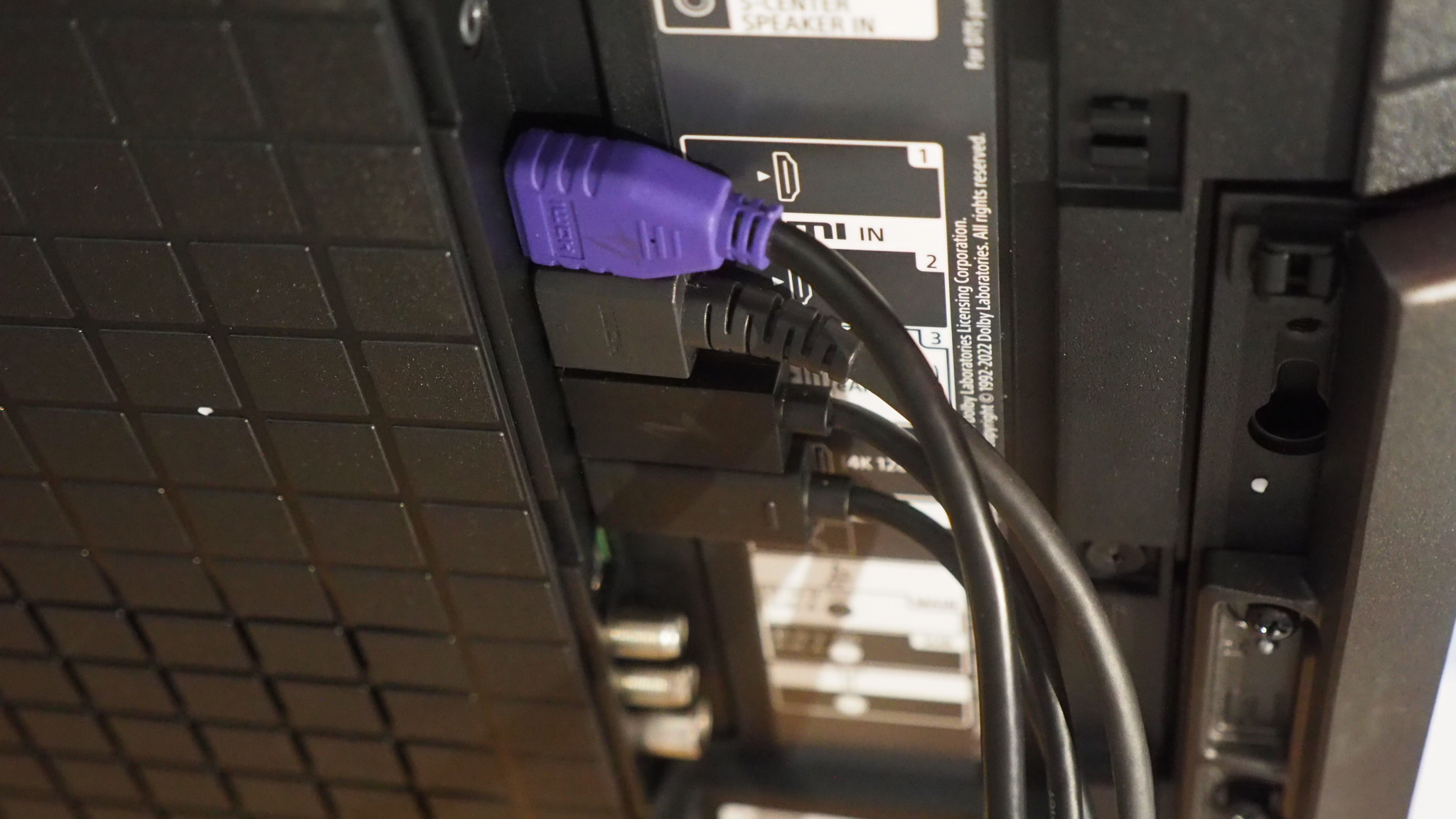Sony A95L review: TV mastery at work
For pure sound and vision quality the Sony's A95L QD-OLED is a delight – caveated with some design and feature quirks



The Sony A95L delivers stunning quality straight out of the box, beating its key competitors when it comes to sheer picture clarity, overall brightness, and motion processing authenticity. Sure, you'll have to pay more cash to own one and need a massive piece of AV furniture to place it on, but with fantastic sound quality and Dolby Vision 4K/120Hz future-proofing, this Sony is worth its asking price for high-end enthusiasts.
-
+
Super-bright yet even-handed picture quality is stunning
-
+
Incredible sound offsets need for a soundbar
-
+
Dolby Vision Gaming at 4K/120Hz, VRR, ALLM
-
-
Feet at outer edges makes for a foolish stand design
-
-
Only two of four slots are HDMI 2.1 standard
-
-
Google TV remains irksome
Why you can trust T3
I was at Sony's UK headquarters almost exactly a year ago the first time I laid eyes on the A95L – the company's second-generation QD-OLED TV as part of its 2023 TV range – and like a moth to flame (rather tech journalist to super-bright telly) it was mesmerising to look at. I've been keenly awaiting an A95L for review ever since.
The Sony A95L appears to be a shoo-in for one of the best OLED TVs, given its specification quality. I'm semi glad it's also taken an extended period for this TV to arrive – because some of the A95L's day-one feature absences are now on board (UK catch-up apps baked into Google TV, Dolby Vision Gaming at 4K/120Hz) to make it a more rounded and even more appealing prospect.
Having tested many of the best TVs over recent years, living with the Sony A95L – on review here in its 65-inch form; 55- and 77-inch are also available – has often left me awestruck. That's caveated by some design and feature downfalls, however, which are perplexing. Not to the point of dumbing down the A95L's sheer picture and sound quality finesse, mind, as this TV is no doubt a master of its craft that's a rare sight to behold.
Sony A95L: Price & Availability
You can buy the Sony A95L right now, but you'll need a decent lump of cash to do so. The 65-inch model I'm reviewing here (the XR-65A95L for its full codename) costs £3699 / $3500 / AU$5995 – much more than similar rivals, including the Samsung S95C (which houses the same base panel as this Sony), but as you can see from the shopping widget embedded above, the asking price has dropped since its original on-sale date.
If the 65-inch isn't the right size for you (and, for many, it won't be on account of its poor ultra-wide stand design – which I'll get to in a bit) then the smaller 55-inch model (the XR-55A95L) retails at £2999 / $2800 / AU$5295. And if you've got stacks of space, wads of money, and an AV stand the size of a small country then the 77-inch model (the XR-77A95L) might be more up your street – if you can handle its £5999 / $5000 / AU$9495 outlay.
Sony A95L review: What's New?

As I mentioned, the A95L is the second-generation QD-OLED model from Sony, succeeding the previous A95K model – which was also a true 5-star showing – and that means there are some notable upgrades for the newer model. It is the top-of-the-line model in the company's range, after all.
First up is the addition of that 77-inch model – a whole new size which wasn't present before. All three A95L size options are finished in a coating that better negates reflection too. But more importantly is a much brighter panel, thanks to an all-new heatsink, which means it hit peak brightness at double that of the previous generation's maximum.
Get all the latest news, reviews, deals and buying guides on gorgeous tech, home and active products from the T3 experts
Sony appears to be one of the only brands using MediaTek's Pentonic 1000 high-end chipset, too, which means its HDMI 2.1-enabled ports (HDMI numbers 3 and 4, unusually) can cater for 4K/120Hz Dolby Vision content. That also includes Dolby Vision Gaming, a feature more recently added – although PlayStation 5 gamers can't make use of it, but Xbox Series X players can with compatible games (you just have to activate it in your console's settings).
Sony A95L review: Design & Usability

But before you get to reap the rewards of that audio-visual and gaming goodness, you'll need to set up the A95L. Which, as I found out first-hand with the 65-inch model on review, isn't as straightforward as I'd expected. Not if you're intending to use an AV cabinet or piece of furniture rather than wall-mounting anyway.
That's because the A95L's stand design foolishly positions the legs at the outermost points. My large wooden AV cabinet measures 140cm across – no problem for a 65-inch Panasonic MZ2000 or 65-inch LG G3 OLED – but the XR-65A95L requires a minimum of 145cm. That's why there's a big stack of books to the side of the cabinet in my review pictures, to accommodate this perplexing design choice in supporting one of the two legs and, therefore, the whole telly. Yay for books!

However, the two legs can be mounted in a choice of two vertical options: so the TV sits almost flush with a cabinet's surface; or raised, as per my pictures, to accommodate other hardware in front of the TV itself – whether one of the best soundbars, a streaming box, or whatever else you may wish to plant in front. I'd suggest keeping it clear if possible, though, as that's how this Sony TV looks most elegant in my opinion.
Setup-wise you'll then need to jump through the various stages of Google TV, the updated operating system on board here, which seemingly requires you to sign into an account, as to then make recommendations (many of which are highly peculiar – but thankfully can be hidden if you opt for an 'apps only' view). This is all controlled using one of the two included remotes. I have no idea why there are two – I'd prefer just one that functioned better overall, as the better-looking one of the pair has a lacklustre response even with clear line of sight.

As I've come to this A95L review later than some – it's been in the shops for some months now – it's benefitted from various app additions as part of Google TV. That means in addition to the best streaming service 'big guns', such as Netflix, Amazon Prime Video, Disney+ and Apple TV+ all sitting pride of place, there's also BBC iPlayer, ITV X, All4, and My5 all present and correct. Jolly good!
While Google TV is better implemented on Sony's TV than you'll find on, say, the current Philips range (where internal software seems to battle with Google's own, disallowing various menu selects depending on which screen is showing), I still don't love the evolution of Google's software. The layout just isn't that useful. The recommendations don't make much sense to me. If you're living in a set-top box or via other hardware inputs then you won't really care, but I feel the only brand making logical inroads with software right now is Panasonic with its Fire TV-toting Z95A (and, okay, LG's in-house and future-proofed software is also solid).
Sony A95L review: Picture Quality

Once you have the A95L setup in an altogether less book-laden fashion than I managed, and you've got over Google TV's unneeded appearance each time you switch the TV on, what's undeniable is the immediate quality that's on hand here.
Sure, it's early in 2024 as I write this, and there's a reasonable chance Sony will announce an 'A95M' in the not-distant future, but I think the A95L provides the best-looking picture of any TV I've seen in 2024 (*that you can buy right now – I'm excluding the CES 2024 product announcements that are forthcoming later this year).
That's straight out of the box too. There are many meaningful presets and adjustments that can be made but, seriously, the A95L's deft touch and understanding of picture quality is immediately obvious. It just presents such a clean visual, one that's rich yet not overbearing in saturation, with a level of detail that's undeniable. It's bright yet measured, with colour that pops without becoming garish, and a depth and motion that feels genuine.

As you'll have likely gleaned from my review images, Dune: Part One has been a notable recent catch-up watch for me (on 4K Blu-ray, no less) – which you might immediately consider a poor choice for testing a TV so bright. But actually I see it as quite the opposite: it's in the subtlety and sheer breadth of black-scale dynamism that this Sony can handle those super-dark HDR scenes. Even on a more muted colour palette and vision, but then every time colour does pop – when warm sun breaks through onto characters' faces – it adds another layer to its effortless ability.
At the opposite end of the scale, streaming Spider-Man: Into The Spider-Verse on Netflix is a great example of how a modern movie can really grab a technology and run with it. As per many animated movies, where the idea of HDR is almost endlessly more controllable, as we're not dealing with film or digital capture of real-life scenes, bright scenes are really, truly, bright. It's a stunning vision, presented so perfectly on this Sony – you can even go all out in Vivid mode, which isn't something I've said about any live-action movie, ever.
What Spider-Verse also represents so well is how the Sony's processing and motion-handling is so rarely fazed. Textures remain in tact even through pacey motion scenes, and it's rare for there to be any ghosting, stutter or artefacts around more complex subject areas – something I've seen in the Panasonic MZ2000's MLA OLED panel, for example. Upscaling is supremely handled, too, although not quite as clean-cut as the best source material.
Sony A95L review: Gaming & Sound

As an owner of both PlayStation 5 and Xbox Series X, most TVs these days don't possess enough HDMI 2.1 ports for my needs. Sadly it's the same deal with the Sony A95L: only its number 3 and 4 ports are of that standard, required for 4K/120Hz, the other two are HDMI 2.0.
Regrettably one of those ports is also the HDMI eARC port, which I would often use for passthrough of a separate soundbar. I've not found that possible here, however, as Google TV seems to be fussy about specific soundbars – I had a similar issue on the Philips OLED+808 with a Polk soundbar exhibiting significant sync delay; the Sony, meanwhile, refuses to even talk with the Polk setup – but in the case of the A95L it's actually not been a bother.

That's because this Sony has among the best sound I've heard from any TV, ever. I've been genuinely surprised at just how well the so-called Acoustic Surface Audio+ system works, which uses the actual screen surface to produce sound vibrations. This is incredibly adept at delivering accurate on-screen sound reflection, with lots of height and width to the soundstage. This TV therefore really doesn't require a soundbar at all – and its bass delivery is solid too.
That's been great when gaming, with superb bright pictures matching up with crisp sound quality. There's plenty of gaming support, too, with Variable Refresh Rate and Auto Low-Latency Mode available and a Game Mode to define your preferences. The low input lag makes for great gaming sessions and as more titles will likely support true 4K/120Hz in the future the A95L is future-proofed beyond many of today's current TVs.
Sony A95L review: Verdict

Without doubt the Sony A95L delivers among the most stunning quality straight out of the box, beating many competitors when it comes to sheer picture clarity, overall brightness, motion processing authenticity, and Dolby Vision Gaming at 4K/120Hz.
Sure, you'll have to pay more cash to own one, but with built-in sound that's bounds ahead of many competitors, you'll never truly need to possess a separate soundbar. You will, however, need to own a massive AV cabinet to accommodate the ill-thought-out stand design. Some competitors, such as the LG G3 OLED (and new G4 OLED), also offer a full suite of HDMI 2.1 ports – which, considering the A95L's asking price, is something Sony should have provided.
Still, for sheer knock-out picture and sound quality rolled all into one, whether you're a die-hard cinema enthusiast, a hardcore gamer, or both rolled into one, the Sony A95L at its best is a TV master at work – and a rare sight to behold.
Also consider
If you're looking for a QD-OLED and don't have as much to spend then Samsung's S95C is a great alternative. Its pictures don't look quite as natural, despite using the same base panel, and it doesn't sound quite as good either. But it'll save you cash.
If having four HDMI 2.1 ports is key to your needs (looking at you, avid gamers) then the wall-mount LG G3 OLED is a great alternative to consider. Short of that, if you want a similar MLA OLED panel with mega integrated sound then Panasonic's MZ2000 is the route to take.

Mike is T3's Tech Editor. He's been writing about consumer technology for 15 years and his beat covers phones – of which he's seen hundreds of handsets over the years – laptops, gaming, TV & audio, and more. There's little consumer tech he's not had a hand at trying, and with extensive commissioning and editing experience, he knows the industry inside out. As the former Reviews Editor at Pocket-lint for 10 years where he furthered his knowledge and expertise, whilst writing about literally thousands of products, he's also provided work for publications such as Wired, The Guardian, Metro, and more.
